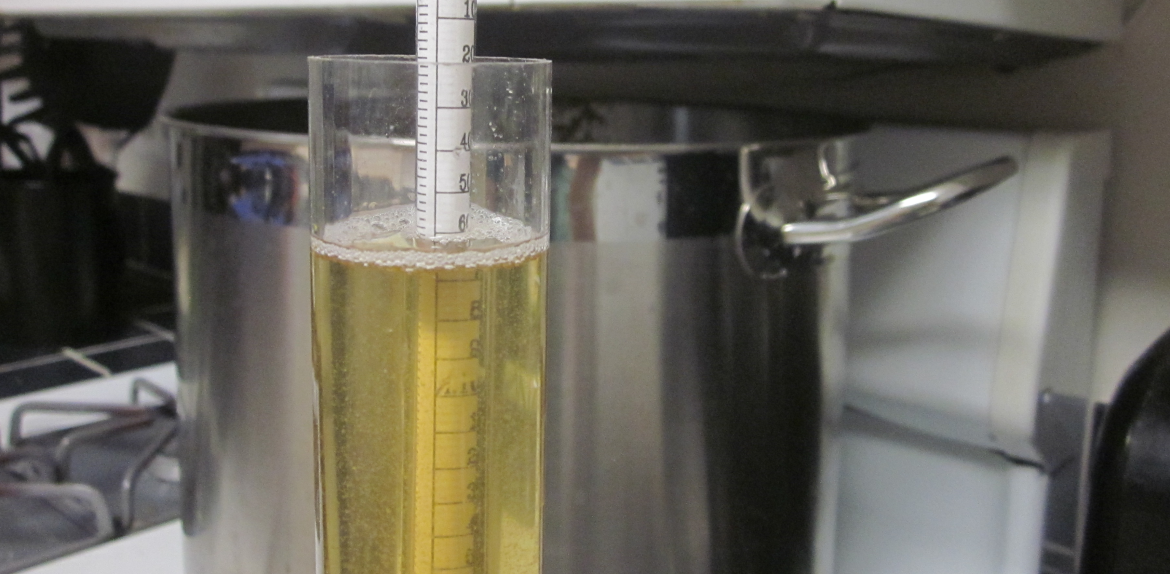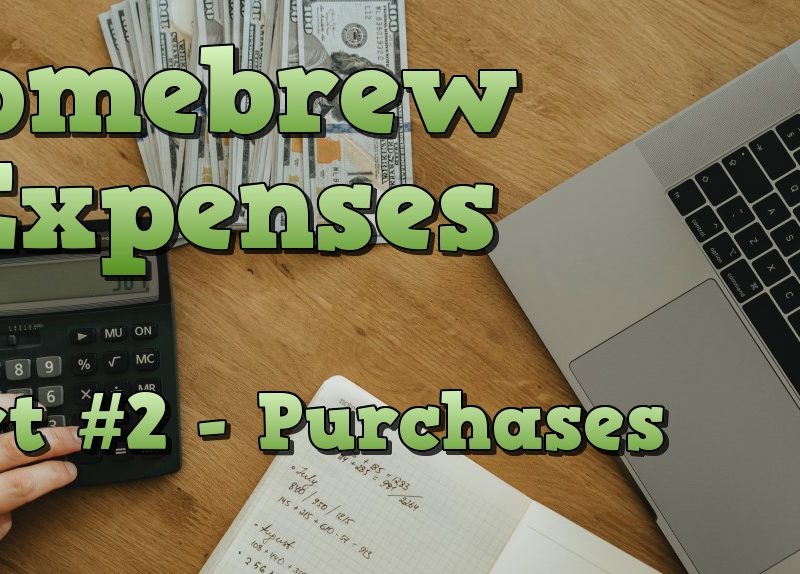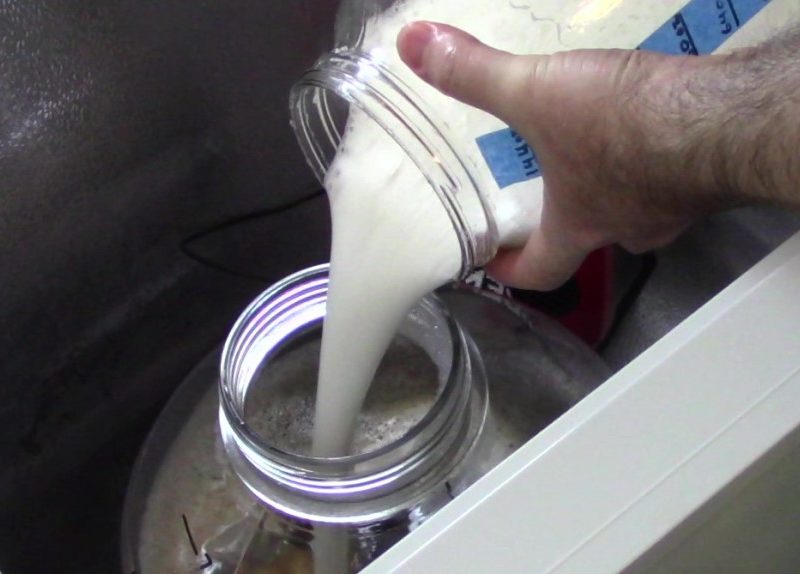In this article I present the case for why 2.5-gallon stovetop BIAB brewing might be the best entry point for all-grain brewing. Heck, it might just be the best size batch period! While 5-gallon brewing is very popular, it is just not practical or a good fit for a number of brewers. On the other end, 1-gallon brewing has limitations. Read along while we discuss that often-ignored sweet spot of 2.5-gallon stovetop BIAB brewing!
Can I Really Make Great Beer on my Stove?
Yes you can!!
This article is not about gimmicky Mr. Beer type kits or fermenting hooch in your bathtub. It is also not about brewing beer the cheapest way possible. While I cannot provide a full discussion of extract vs all-grain and BIAB vs other all-grain brewing processes here, I do believe that all-grain brewing opens up possibilities to make better beers and I do believe that BIAB can make beer equal to any other process.
I also believe that, when combined with sound brewing practices, quality ingredients and good recipes, 2.5-gallon brewing can produce the same quality beers as 5-gallon, 10-gallon, or 20-barrel brewing.
Note on units: I live in the US and I mostly think in gallons, pounds, ounces, and degrees Fahrenheit (with grams mixed in now and then). All prices mentioned are in US Dollars. 2.5 gallons is roughly 10L and 5 gallons roughly 19L.
Before digging into 2.5-gallon brewing, let’s take a quick look at other popular alternatives.
Why are 5-Gallon Batches Standard?
5-gallon batches became the defacto standard size in the United States. I suspect this was mostly driven by items like buckets and carboys being readily available in 5-gallon sizes. At some point, 5-gallon used soda kegs became popular for packaging homebrew. Today, this is probably my best justification for brewing 5-gallon batches. Used 5-gallon kegs are still relatively cheap and available, and it just feels bad filling 3 gallons into a 5-gallon keg.
Note that I use the term 5-gallon here, but I typically shoot for around 5.5 gallons into the fermenter so that I can get around 5 gallons into a keg. I will use the term to mean batches in the 5- to 6-gallon range, or 18 to 20 liter range.
As far as extract brewing is concerned, there might be a solid argument for 5-gallon batches. With extract brewing, it is much easier to do a concentrated boil with 3 or 4 gallons of water. You can then top this batch to 5 or 5.5 gallons of water when added to the fermenter. That said, 5-gallon extract batches still have some of the same drawbacks as all-grain.
What is Wrong With 5-Gallon Batches?
Did you get the hint?
I do not think 5-gallon batches are the best batch size for new all-grain brewers.
Brewing – gallon all-grain batches requires:
- A large mash vessel. A typical batch will have 10 to 12 pounds (5 kg) of grain and use around 8 gallons of water. For full volume BIAB I find my 10-gallon kettle to be a good size, but for some batches could use a little more room. Other brewing processes also require a large mash vessel, and maybe another vessel for hot sparge water.
- A large boiling vessel. Depending on some factors like boil off rate, losses, and fermenter volume target, you will start your boil with 6 to 7 gallons of liquid. 1 gallon of headspace for boiling is a bare minimum. It is harder to do concentrated boils with all-grain than with extract.
- A strong heat source. Most kitchen stoves will struggle to boil more than about 4 gallons of liquid. 7 gallons of wort may also exceed the weight rating of your stove. Alternative heat sources like propane burners and 220V electric are nearly a requirement.
- A strong back. 5 to 7 gals of water weighs in the 40 to 60 pounds range (18 to 27 kg). This can be strenuous and dangerous, especially if you need to move a full kettle of boiling liquid!! Pumps are an option, but can be rather expensive.
- A way to cool to pitching. Ignoring no-chill brewing for now, chilling 5 gallons of boiling wort down to yeast pitching temps requires either a lot of patience or a dedicated chiller.
- A thirst. A 5-gallon batch will yield around 2 cases of beer (48-ish 12-oz bottles). For some people, this is a lot of beer to drink, especially of the same batch of beer. This is even more true if the batch turns out less than stellar, which is a likely situation for a new brewer.
I can hear you now: “But what about 5-gallon batches using one of the electric all-in-one systems?” You make a good point there! I do not have hands on experience with these types of systems. They seem like a great choice, especially if you have access to 220/240V power. They do require a several hundred dollar investment on top of the other brewing equipment needed though. The smaller AIO systems look great for doing smaller batches as well…say 2.5-gallon batches?
What about 1-Gallon Batches?
I see a number of kits for 1-gallon batches. I am just not a huge fan. They can be a good intro to brewing, especially for extract brewing. I also find this to be a great size for purely experimental batches, and I make them often to try out new hops and I have made some 1-gallon single grain batches.
The pros:
- You can likely make a 1-gallon batch using a pot you have around the house or pick up for under $15. The other equipment needed is also inexpensive.
- This volume can easily be heated on a stove and chilled in a sink.
- It is a very easy volume of liquid to move around.
- You can stick a small fermenter about anywhere and maybe use a small fridge for temp control, or your kitchen fridge to cold crash.
Some of the cons include:
- Once you move beyond packaged kits, ingredients can be awkward. You may need to purchase 1 lb of specialty grain only to use 3 oz, you will often need to use only a portion of a 1 oz package of hops, and 1 pack of dried yeast is about enough for 4 batches.
- Liquid yeast can be hard to adapt to these small batches, or expensive if using an entire pack.
- I have done a few 1-gallon all-grain batches, and it is a significant time investment. There is minimal time savings over a 2- to 3-gallon batch with 1/2 to 1/3 the final volume.
- For me the size is just too small. A 1-gallon fermenter will likely yield about a 6 pack of beer. By the time you have opened one or two to ensure the carbonation is okay and the beer is good, your options are limited as far as sharing with friends or stashing away bottles to age.
The Sweet Spot…2.5-Gallon BIAB Brewing
Now I finally get to my point.
2.5-Gallon Stovetop BIAB batches are a great place to start all-grain brewing!
2.5-gallon batches eliminate most of the cons of 5-gallon batches and incorporate many of the advantages of 1-gallon batches.
- You no longer need a large mash and boil vessel. A 5-gallon kettle provides enough room for a full volume mash of all but the biggest beers, and plenty of headspace for boils. I often see 5-gallon kettles at department stores for around $30.
- Your kitchen stove will likely provide plenty of power to heat the mash water and to boil the approximately 3.5 gallons of wort.
- Moving around 3 to 4 gallons of water is fairly easy for most people.
- While an immersion chiller will speed up the process, I find that you can chill a 2.5-gallon batch in a kitchen sink ice bath without too much effort.
- 2.5 gallons of beer is about 24 (a case of) 12-oz (or 0.33L) bottles. That gives you a few bottles to open to verify carbonation and for the required “quality control”. You have a six-pack to enjoy yourself, a six-pack to share with friends, and a six-pack to stash away. If the beer turns out less than stellar, it is a manageable amount. Plus you can justify brewing another batch much sooner.
- It is also much easier to work with ingredients in a 2.5-gallon batch vs a 1-gallon batch. A single pack of Wyeast or White Labs yeast is about the perfect pitch rate for an average gravity 2.5-gallon batch.
A benefit for me is that I get to brew twice as often! When I am working on a recipe, I often need several batches before I hone in on one that meets my goals. I also enjoy the general idea of creating a recipe, executing that recipe, and sharing the final beer with friends. This happens twice as fast vs 5-gallon brewing.
The 2.5-gallon size also works quite well for more unique batches. Maybe I am not really craving a Pumpkin Ale, but it will be a good fit for a competition or party. Maybe I am curious about a new style or motivated by an article I read, but I am not sure I want 5 gallons. 2.5-gallon batches are a great fit.
Any Downsides to 2.5-Gallon BIAB Brewing?
So, do 2.5-gallon batches have any negatives?
- Recipes and kits are almost non-existent (at least as of now). I advocate all-grain kits as a great place to start with all-grain brewing, but you probably will not find 2.5-gallon kits. Splitting a 5-gallon kit into two batches might be possible depending on how the ingredients are packaged. You can generally start with a 5-gallon recipe and just divide all the ingredients in half.
- In the same vein, there are few (none?) 2.5-gallon beginner equipment kits for sale. In a follow up article, I will dig into the exact equipment needed for brewing 2.5-gallon batches. There is a quick overview at the bottom of this article.
- Kegging options are limited and expensive. I justified a pair of the Torpedo 2.5-gallon (10L) kegs when I received a bonus at work. A single 2.5-gallon keg will likely run 2x the cost of a used 5-gallon keg. Bottling is a great place to start and using a 5-gallon keg is also an option.
- You only get 2.5-gallons of finished beer!! I do enjoy brewing 5-gallon batches and sometimes a good beer will kick too soon. I have buddies that brew 10 and 15 gallon batches.
- It is more “work per gallon” than with brewing larger batches. While 2.5-gallon batches will take a little less time than brewing 5-gallon batches, they are far from requiring half the work. Many steps along the way, like cleaning a fermenter or managing fermentation, require just about the same amount of effort.
2.5-Gallon BIAB Brewing – Next Steps
This article provides an introduction to 2.5-gallon BIAB brewing. Are you sold on the idea? At least interested in learning more? In a future article I will cover the equipment needed as well as document my process.
If you cannot wait until then, a summary of the equipment needed is below:
- A basic 5-gallon starter equipment kit. If you don’t plan on brewing 5-gallon batches, just get one with a single bucket as a fermenter (it will likely have a second bucket as a bottling bucket). I use several buckets for various tasks on brew day. Some kits include a 5-gallon kettle.
- A 5 gallon-kettle. If you want to brew 2.5-gallon batches, I would not go much smaller than this size, but you might stumble across a deal on one a little bigger. A 4-gallon kettle is a good size for 2-gallon batches.
- A fermenter in the 3-gallon range. I have a pair of 3-gallon Fermonster fermenters (with spigots) that work well for me. I have found limited options, but there are cheaper options (like a 5-gallon food grade bucket from the big box) or more expensive options (like the Ss Brewtech 3.5-Gallon Brew Bucket).
- As mentioned earlier, kegging options are limited and pricey. I advocate starting with bottling.
Get to Brewing!
Note that the point of this article was not to disparage 1-gallon or 5-gallon (or larger) brewing. Heck, I brew 1-gallon and 5-gallon batches myself. My goal was to give some attention to the middle ground that I don’t see discussed.
In reality, the best size batch is the one that fits your needs and preference. But…
- Do you find yourself wanting to brew all-grain but you don’t think you have the room or budget for the equipment needed?
- Do you find the weather is getting in the way of brewing outside?
- Are you finding you would like to brew more but hate dragging out all the equipment?
- Would adding 2.5-gallon batches into your cycle help you with trying new recipes/ingredients or brewing specialty batches?
Be sure to check out the other articles in this series for more information where I will dive deeper into the equipment needed, and the process that I use.




Thank you for the advice! Perfect information as I get back into all grain brewing but lack the dedicated space for my old system.
I am glad you found the information useful. Good luck as you get back into brewing. The electric all-in-one systems also look like a great option if you don’t mind investing $300-$400.
Great post. I’ve been mulling over all-grain for a while now and especially the idea of also switching from LHBS recipes to my own recipes at the same time. The prospect of developing a recipe and having to drink it x50 before the next iteration seems like it would slow down the fun of progress
Very useful article, thanks! Just recently into brewing and have been doing one gallon batches. It’s been great for learning and doing a bit of experimentation but the work to payoff ratio isn’t great. Doing 5 gallons isn’t an option in my tiny flat but from the sounds of it 2.5 should be doable and I don’t think much more effort but I haven’t found much resources online about these kind of batches so this is great! Cheers!
I am glad you both found the info useful. I enjoy 1 gal batches to try out a new hop or ingredient, but you have to brew often if you want enough volume to enjoy yourself and share with friends. My girlfriend has been doing 2 gal batches on her stove in her condo, and it is a great fit for her.
Yeah, there are a lot of resources on 5+ gallon batches, and some on 1 gallon batches, but there is not a ton of resources for mid-size batches. It would be great to see more equipment, starter sets, and recipes available for this size batch.
Interesting ideas!
I do 5.5 gallon Partial Mash plus Liquid Malt Extract batches on my stove top with about 5 to 7.5 lbs of grain and 3 lbs of LME that I add at Zero minutes (a la John Palmer). My boil size is about 3.75 to 4 gallons. My kettle fits in my oven and I preheat it to 170 degrees f and turn the heat off and can maintain a fairly steady mash temp. This makes mashing easier and less costly than buying more equipment like a 10 gallon water cooler. Though I suppose I could put my Brew Bag into one of those for mashing. I usually do 4.4% to 5.8% ABV beers. If I did a 6% or higher ABV beer I would add a pound or two of Dried Malt extract plus the liquid. I am curious to try a smaller batch with only grain and may do so this December or next Jan. Your articles and videos are helpful and got me thinking. (that may be good or not so good!)
Glad I could be of help. I enjoy brewing small batch all-grain, but I have been thinking about trying a partial mash batch like you mention to turn out a full sized batch on my stovetop. I do really enjoy 2.5 gallon batches, but sometimes the good ones kick too quickly!
Thanks for this. My LHBS actually sells 2.5 gallon kits. I’ve just tried my first brew, which was a 1 gallon from a recipe given by a friend. I learned lots from the mistakes I made, and am trying the recipe again.
Most of my fermenting equipment is for 5.5 gallons, but my kettle holds 3 gallons, which works great for 1 gallon. I actually was looking for info on mashing and boiling smaller amounts of water to see if I could top with water to 5.5 gallons for fermenting. Then I found this, which is great but I will still need to top up after mash and boil, which it sounds like I can do.
Hope the info can be of help to you. I have a number of YouTube videos on making 2.5 gallon stove top BIAB batches. I find that a kettle that is 2x your target volume is best for BIAB, but with a sparge and some extra work you can push out a bit more volume. Using some malt extract to adjust your gravity is another option.